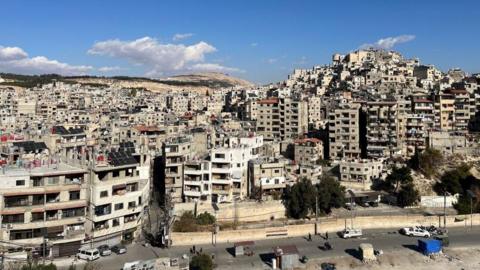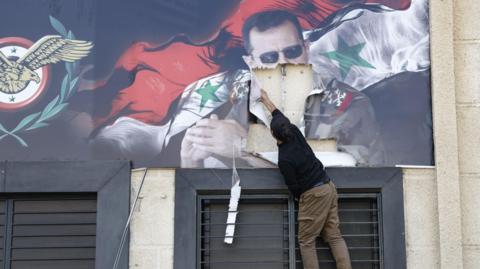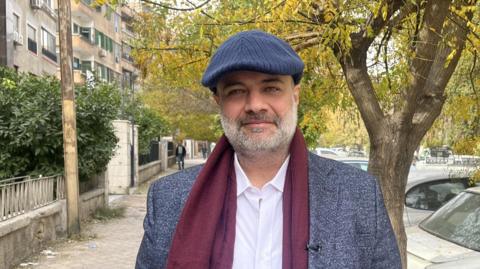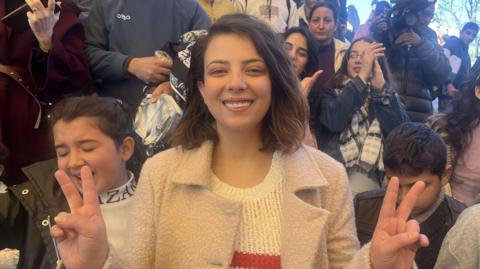We drove around 110km (70 miles) south-east of Damascus, through black volcanic hills, to the city of Suweida, which is home to most of Syria's Druze population.
The Druze faith is another offshoot of Shia Islam, but has its own unique identity and beliefs.
Many Druze were loyal to the Assad regime, who they believed would protect minorities.
But opposition grew steadily during the war, and there were frequent protests in recent years.
The latest started in Suweida's central square in August 2023 and continued until the day the regime fell.
Activist Wajiha al-Hajjar believes that the protests were not brutally cracked down on like others in Syria, because Assad wanted to show the world and his foreign allies that he was protecting minorities.
"They did try to suppress our protest but in a different way - not through weapons or shelling, but by depriving us of passports and civil rights, and access to official documents. It became difficult to leave Suweida and a kind of siege was imposed," she said.
Hundreds still gather at the square every day. When we visited, there was an air of celebration. Songs were blaring on a loudspeaker, and young girls and boys were doing a gymnastics performance, their families clapping and cheering for them.
"We are celebrating the fall of the regime, but this gathering is also a show of strength. In the event that there is an extreme regime with extreme laws, we are prepared to stay in this square and demand our rights and demand equality," Wajiha said.
Suweida had a quasi-autonomous status under Assad, and the Druze want that to continue.
It is just one example of the diversity and complexity of Syrian society, and the challenges facing the country's new government.



